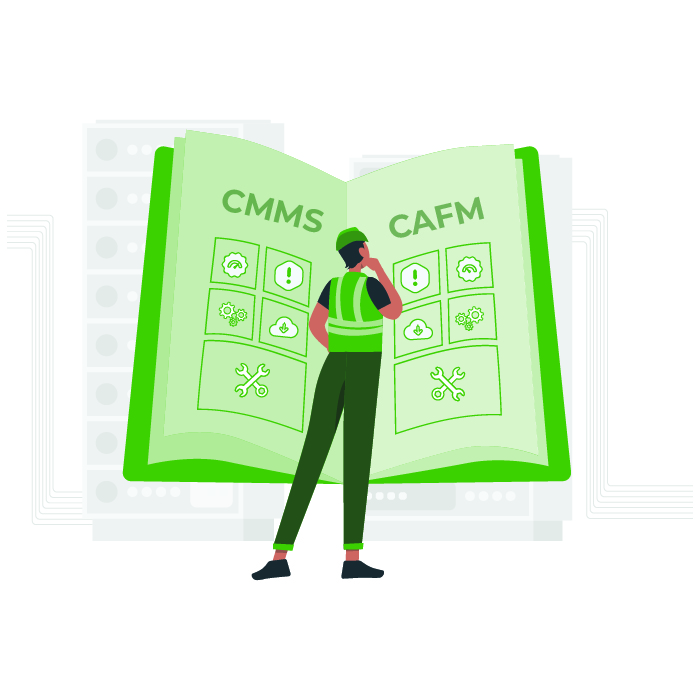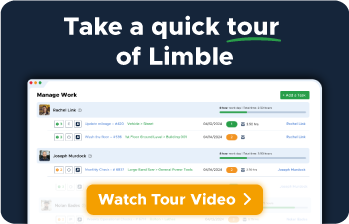LG R410A Portable Air Conditioner Manual
Product Info
The LG R410A Portable Air Conditioner is a versatile cooling unit designed for easy mobility and efficient temperature control in residential or small commercial spaces. Featuring a powerful R410A refrigerant, this model offers energy-efficient cooling while maintaining a lower environmental impact. With user-friendly controls, a programmable timer, and multiple fan speeds, it ensures customizable comfort, while a compact design allows it to fit seamlessly in various settings. Its built-in air filtration system enhances indoor air quality by reducing allergens and dust, making it an ideal choice for those seeking an effective and portable cooling solution.
Download the Manual
Product Maintenance Schedule
Here’s a simple maintenance schedule for your LG R410A Portable Air Conditioner:
### Daily Maintenance
– **Check Air Filter**: Inspect the air filter for dirt and debris. Clean if necessary.
### Weekly Maintenance
– **Clean Exterior**: Wipe the exterior of the unit to remove dust and dirt.
– **Check Drainage**: Ensure the drainage hose is clear and not blocked.
### Monthly Maintenance
– **Inspect Air Filter**: Remove and clean or replace the air filter (more often if used in dusty environments).
– **Clean Coils**: Gently vacuum or brush the condenser coils to remove dust buildup.
### Seasonal Maintenance (Before First Use and End of Season)
– **Deep Clean Air Filter**: Soak in warm, soapy water if reusable, then rinse thoroughly.
– **Inspect Hoses and Connections**: Check for any wear or leaks in hoses.
– **Test Functionality**: Run the unit to ensure it cools effectively and listen for unusual noises.
### Annual Maintenance
– **Professional Inspection**: Consider having the unit serviced by a professional to check refrigerant levels and overall functionality.
By following this simple schedule, you can help ensure your LG R410A Portable Air Conditioner operates efficiently and lasts longer.
Product Specs Sheet
Here are the typical specifications you might find on a spec sheet for the LG R410A Portable Air Conditioner:
### LG R410A Portable Air Conditioner Spec Sheet
**Model:** LG LP0817WSR
**Cooling Capacity:**
– BTU/h: 8,000
**Refrigerant:**
– Type: R410A
**Energy Efficiency:**
– EER (Energy Efficiency Ratio): 12.1
– SEER (Seasonal Energy Efficiency Ratio): Approximately 13.5
**Airflow:**
– Fan Speeds: 3 (Low, Medium, High)
– Airflow Rate: 230 CFM (Cubic Feet per Minute)
**Dimensions:**
– Unit Size: 18.1 in x 15.4 in x 29.1 in
– Weight: Approximately 72 lbs
**Power Specifications:**
– Voltage: 115V
– Frequency: 60Hz
– Power Consumption: 670 Watts
**Features:**
– Dehumidification Function: Up to 2.3 pints per hour
– Programmable Timer: 24-hour on/off timer
– Remote Control: Included for convenience
– Auto Restart: Restarts with previous settings after a power outage
– Washable Air Filter: Easy to clean and maintain
– Adjustable Louvers: Allows for directional airflow
**Noise Level:**
– Indoor Noise Level: 53 dB (Low), 56 dB (Med), 59 dB (High)
**Warranty:**
– Limited Warranty: 1-year parts and labor
**Additional Information:**
– Installation Kit: Included for easy setup
– Application Area: Suitable for rooms up to 200 sq. ft.
Please note, specifications may vary based on model and region, so it’s always a good idea to check the specific manual or manufacturer’s website for the most accurate information. If you’re considering purchasing or troubleshooting the unit, refer to the product documentation for detailed instructions.
Download the Spec Sheet
Product Diagram
Here’s a common parts list for the LG R410A Portable Air Conditioner along with some common part numbers that you might find useful. Please note that part numbers can vary by model, so it’s always a good idea to verify compatibility with your specific unit.
1. **Compressor** – The main component for cooling.
– Part Number: 6321A20029A
2. **Evaporator Coil** – Responsible for absorbing heat.
– Part Number: 6721A20018B
3. **Condenser Coil** – Releases heat to the outside.
– Part Number: 6721A20018C
4. **Fan Motor** – Drives the fan for air circulation.
– Part Number: 4681A20005C
5. **Thermostat** – Controls the temperature setting.
– Part Number: 6711A20011F
6. **Remote Control** – For convenient operation.
– Part Number: 6711A20009K
7. **Filter** – Cleans the air entering the unit.
– Part Number: 6711A20013B
8. **Drain Hose** – Used for draining excess water.
– Part Number: 5215A20117A
9. **Capacitor** – Helps start the compressor and fan motors.
– Part Number: 2201A20005E
10. **Power Cord** – Supplies electricity to the unit.
– Part Number: 2820A90056E
While this list provides a good starting point, be sure to consult the owner’s manual or a parts diagram specific to your model for precise part numbers and additional components.
Download the Parts List
Product Troubleshooting
Troubleshooting an LG R410A Portable Air Conditioner involves a series of steps to identify and resolve common issues. Here’s a systematic approach:
### 1. **Check the Power Supply**
– **Ensure the unit is plugged in:** Make sure the power cord is securely connected to a working outlet.
– **Inspect the circuit breaker:** Check if the circuit breaker has tripped and reset if necessary.
– **Test the outlet:** Use another device to verify that the outlet is functioning.
### 2. **Inspect the Remote Control**
– **Check the batteries:** Make sure the remote control batteries are functioning. Replace them if necessary.
– **Ensure proper settings:** Confirm that the remote is set to the desired mode (cool, fan, dehumidify).
### 3. **Examine the Air Filter**
– **Clean or replace the filter:** A clogged filter can restrict airflow. Remove the filter and clean it with water or replace it if it’s damaged.
### 4. **Check the Drainage System**
– **Inspect the drain hose:** Ensure that the drain hose is not kinked or blocked.
– **Check for water accumulation:** If the tank is full, the unit may shut off. Empty the tank if necessary.
### 5. **Check the Airflow**
– **Ensure proper airflow:** Make sure that there are no obstructions around the air intake and exhaust areas.
– **Adjust vents:** Make sure that all vents are opened and directed properly for optimal airflow.
### 6. **Inspect the Fan Motor**
– **Listen for unusual noises:** If the fan is not operating, it could be a motor issue. Check if the fan is obstructed or if it needs lubrication.
– **Test the fan function:** Observe if the fan starts when the unit is turned on. If not, further inspection may be necessary.
### 7. **Check the Refrigerant Levels**
– **Look for leaks:** If the unit is not cooling effectively, there may be a refrigerant leak. This requires a professional technician to handle.
### 8. **Monitor Temperature Settings**
– **Verify the thermostat setting:** Make sure it’s set to a lower temperature than the ambient temperature.
– **Test the temperature sensor:** Ensure the sensor is not blocked or malfunctioning.
### 9. **Check for Error Codes**
– **Examine the display panel:** If there is an error code displayed, refer to the user manual for explanation and troubleshooting steps.
### 10. **General Maintenance**
– **Clean the unit:** Dust and dirt can accumulate on the exterior and vents, affecting performance. Wipe down the unit regularly.
### 11. **Consult the Manual**
– **Refer to the user manual:** Always keep the manual at hand for specific troubleshooting steps related to your model.
If the problem persists after performing these checks, it may be necessary to contact a professional technician for more complex issues.
Troubleshooting Guide
Please note that any procedure, checklist, or other document available on Limble is provided for general education and information only and does not constitute legal, medical, or financial advice. Limble makes the materials available AS IS and AS PROVIDED, without warranties of any kind. By downloading or using any such materials, you assume the risk that they may not be appropriate for your specific situation and agree that you are solely responsible for any such use, including compliance with applicable law and with meeting any conditions of product warranties. It is recommended to contact OEM for the most accurate information.
Similar Resources
Explore by Industry
Want to see Limble in action? Request a demo.
FAQ
What is CMMS software?
CMMS (Computerized Maintenance Management System) software helps businesses manage, automate, and streamline all of their maintenance operations. Learn more about CMMS.
Who uses CMMS software?
CMMS software is used by anyone who manages maintenance — facility managers, operations managers, and asset managers, and more — to manage assets, schedule maintenance, and ensure safety. It is widely employed in industries including manufacturing, education, government, food & beverage, and many more to maintain infrastructure and manage resources effectively.
Is Limble Mobile CMMS app user friendly?
Limble is consistently rated Easiest-to-Use CMMS on review sites like G2, Capterra, and Software Advice. And our customers agree. With our mobile CMMS app, teams experience 30%+ better productivity, on average, requiring little to no training or ramp-up time. Our CMMS app can travel with your team, no matter where they go! Visit our App Store or Google Play for more information.
Can I connect to other systems?
Limble provides seamless, pre-built CMMS Integrations with the most widely used software systems. That means you won’t need help from a developer or your IT team to get started. Learn more about our integrations.
How secure is the Limble CMMS platform?
At Limble, our world-class data security practices ensure your account information is safe. We use state-of-the-art technologies and industry best practices to maintain a secure infrastructure, including SOC-II Type II certification, regular penetration testing, and continuous security training for our staff.



